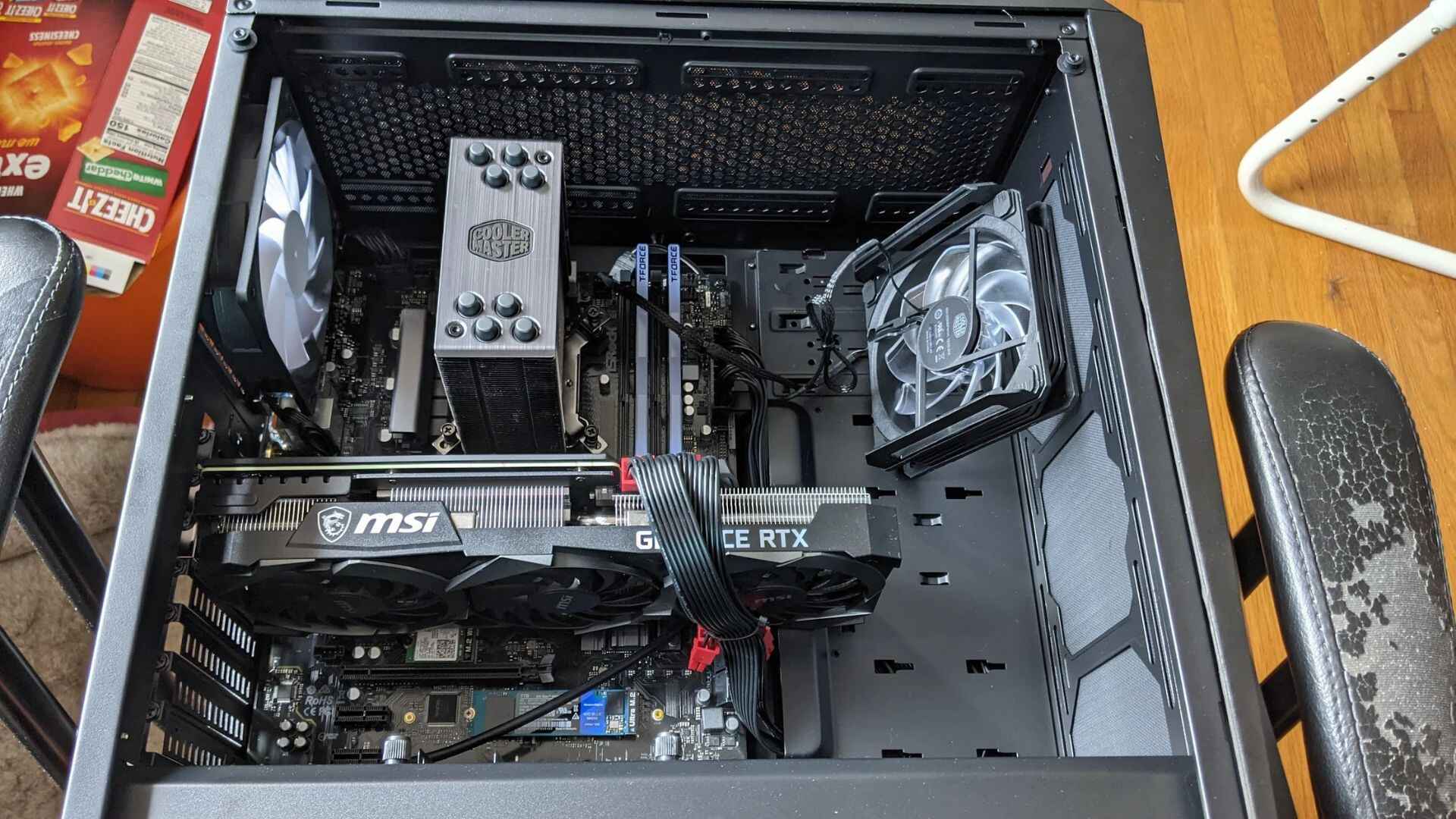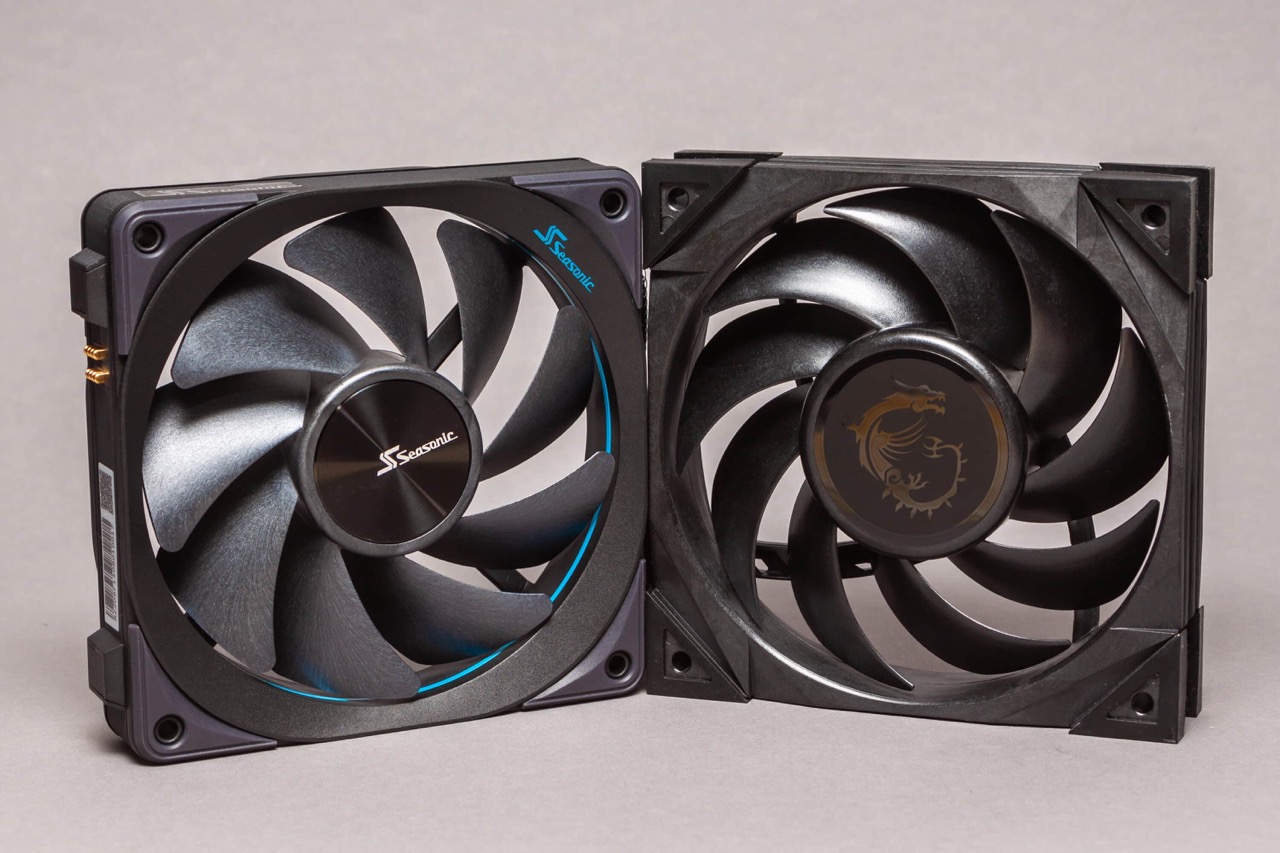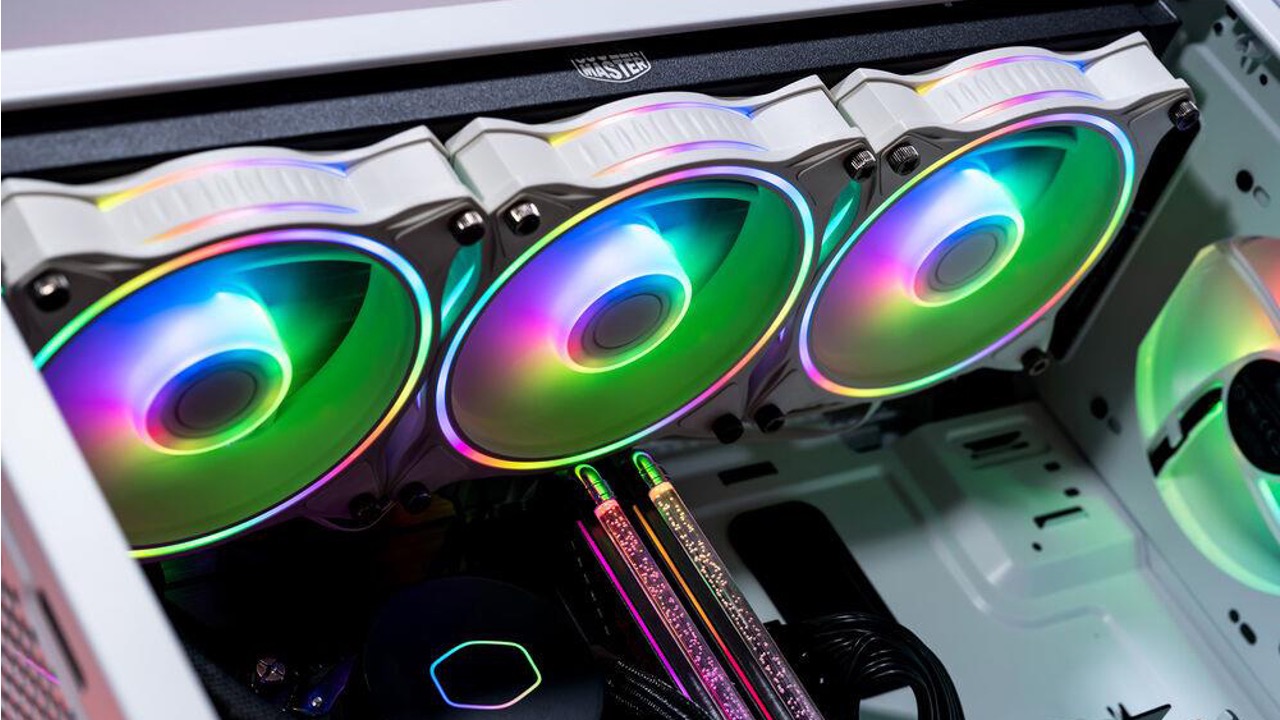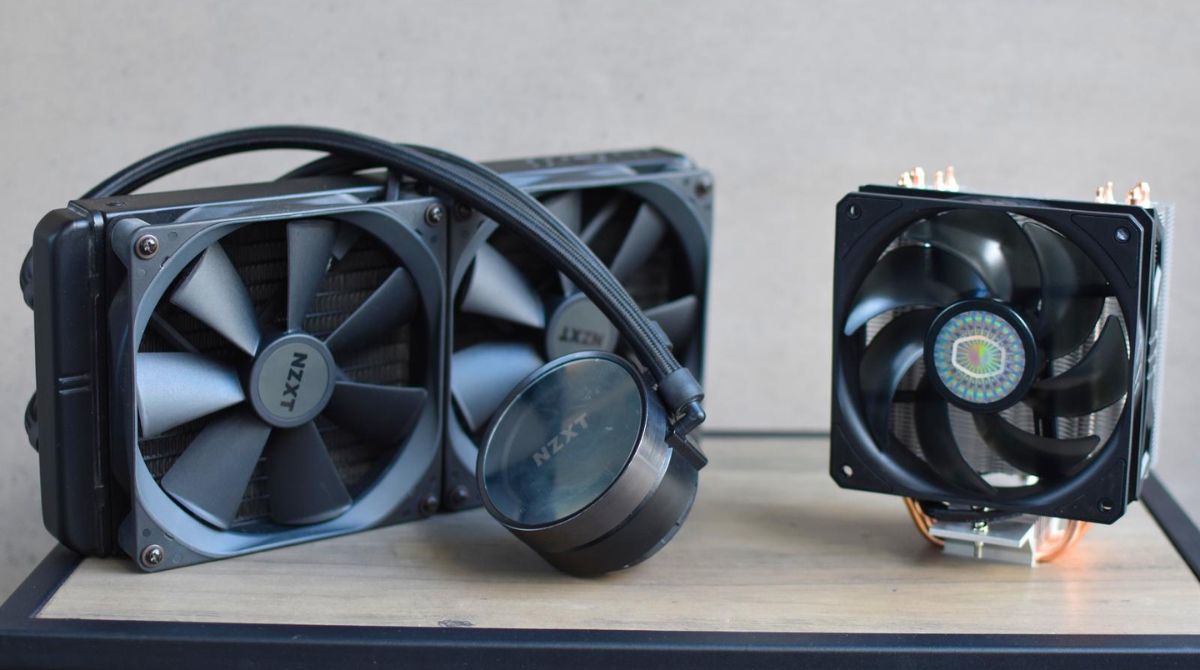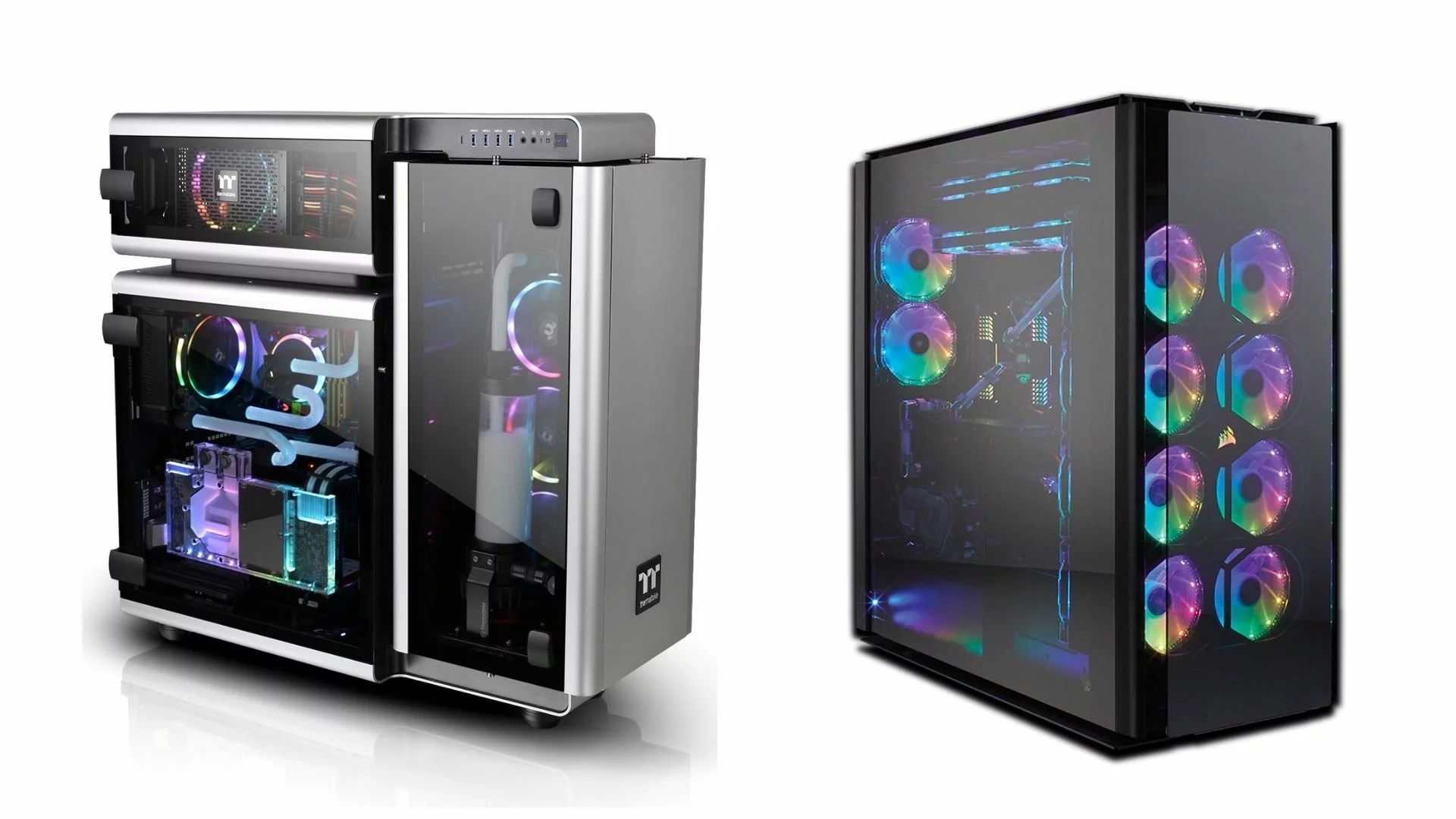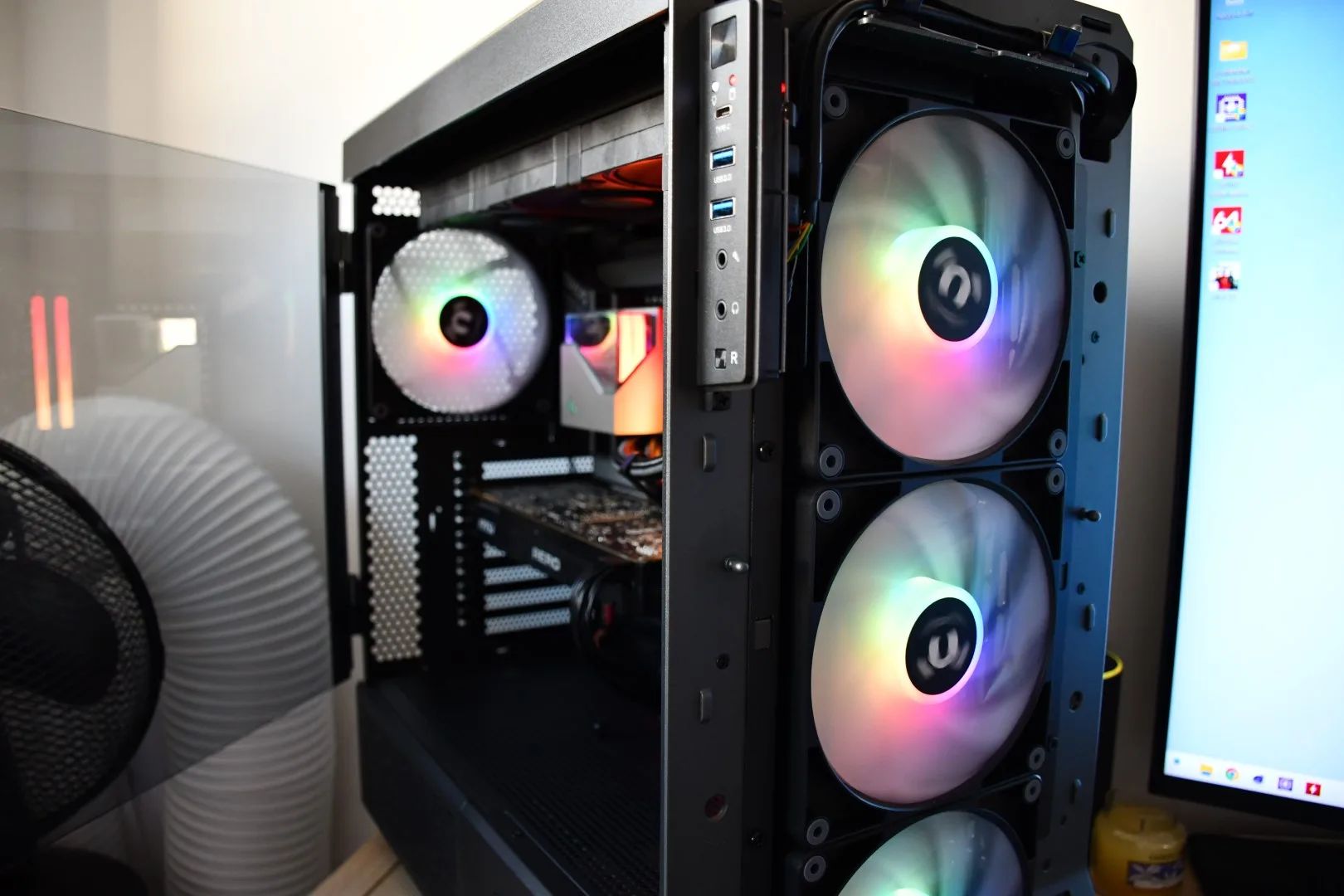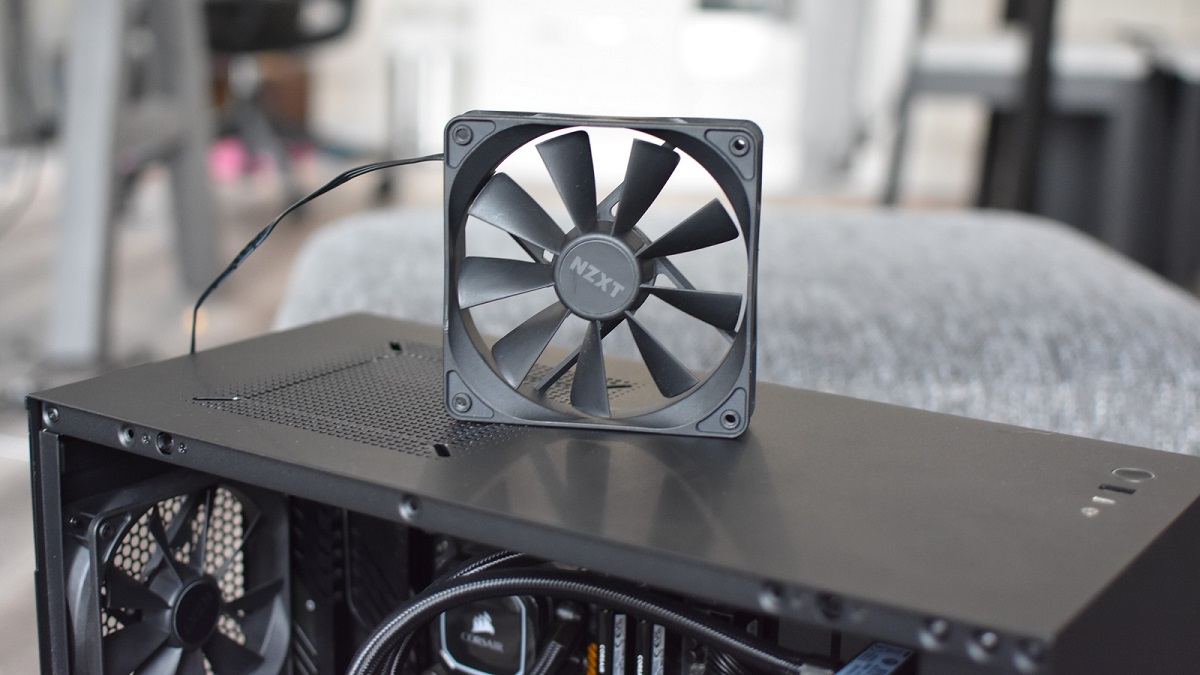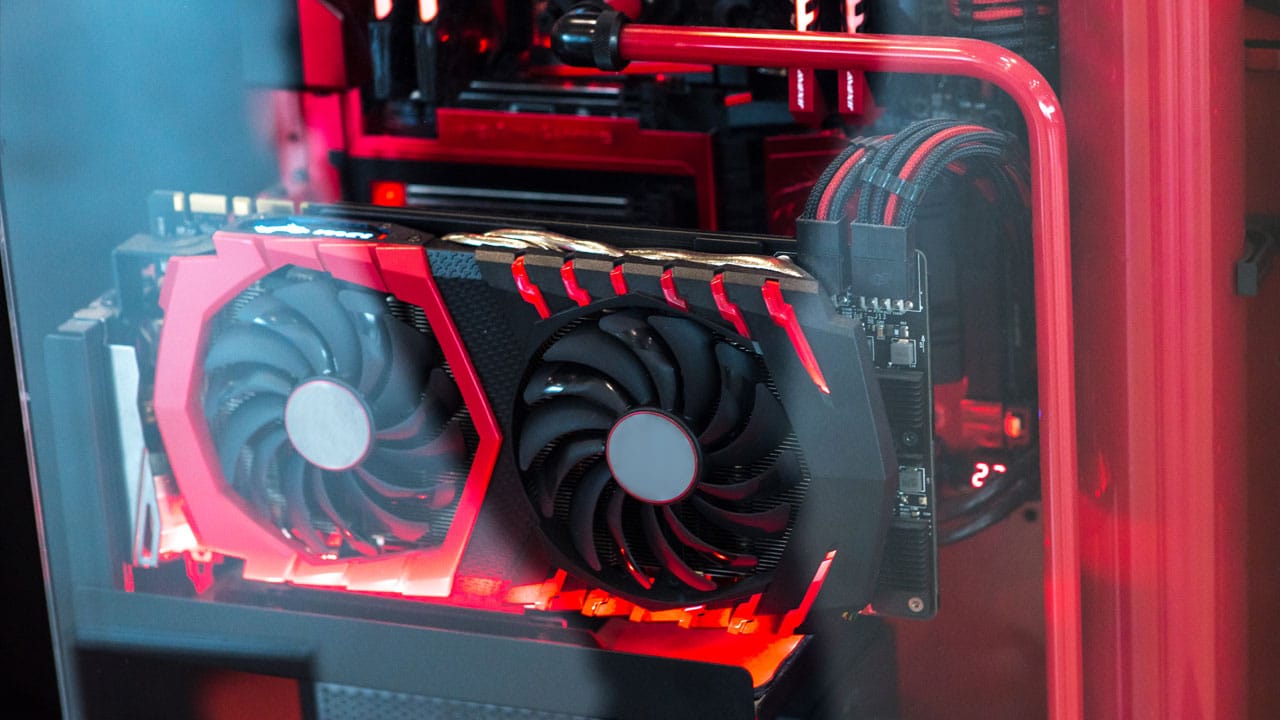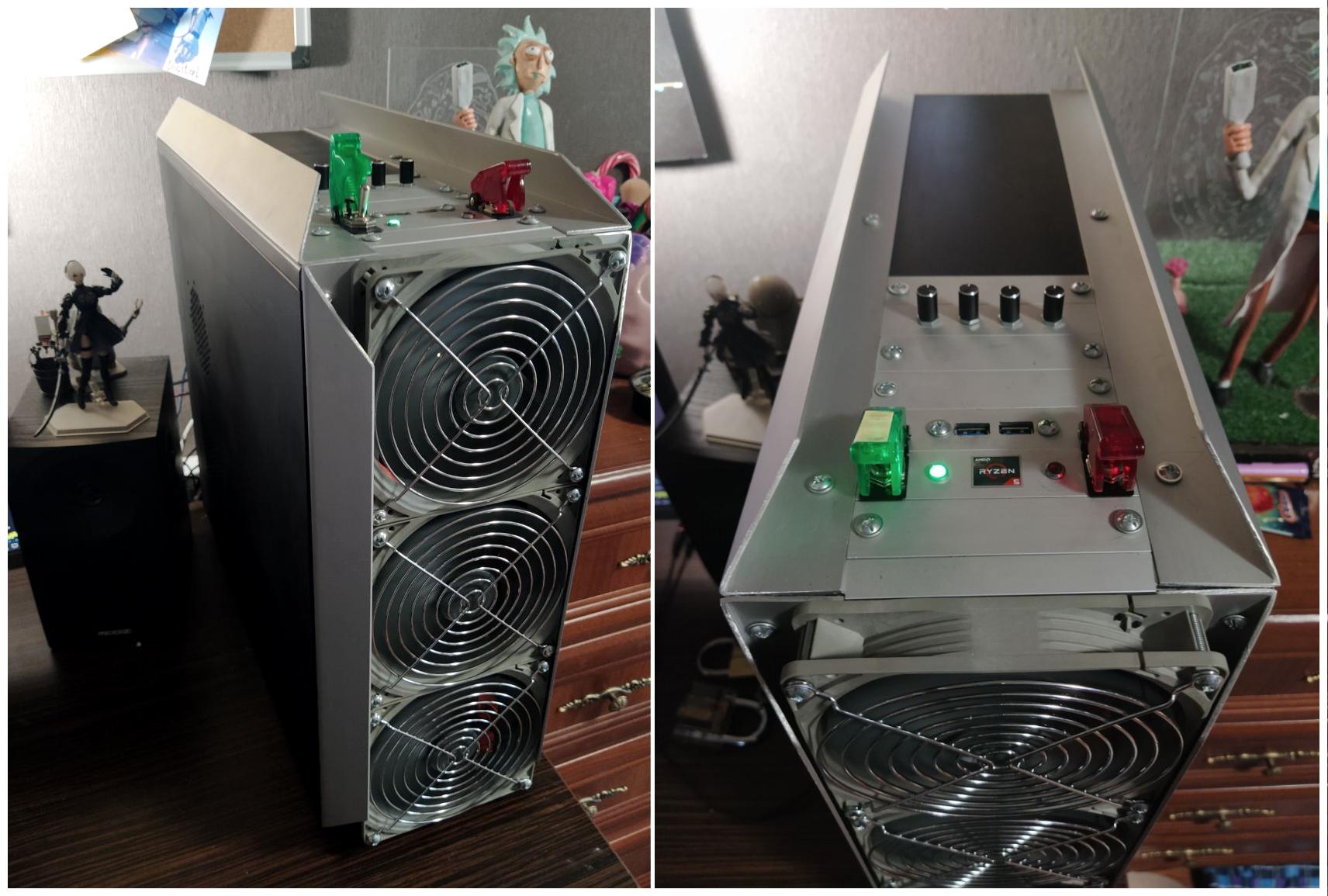Introduction
Welcome to the world of PC building! Whether you are a novice or a seasoned enthusiast, the importance of proper cooling cannot be overstated. Overheating is the enemy of any computer system, as it can lead to decreased performance, instability, and even permanent damage.
One of the key components in ensuring optimal cooling is the PC case fan. These fans play a crucial role in dissipating heat generated by various components such as the CPU, GPU, and power supply. By effectively moving air in and out of the case, they help maintain lower temperatures, resulting in improved system performance and longevity.
However, determining the right number of case fans for your PC can be a daunting task. While it’s tempting to think that more fans are always better, this may not necessarily be the case. Factors such as the size of the case, the components being used, and the desired level of noise and airflow need to be considered.
In this article, we will explore the factors that come into play when determining the number of case fans you need for your PC. We will also discuss the various types of case fans available, their benefits, and potential drawbacks. By the end, you will have a better understanding of how to achieve optimal cooling for your system.
Importance of PC Case Fans
PC case fans are an essential component for maintaining a healthy and well-functioning computer system. They play a vital role in preventing overheating, which can have detrimental effects on the performance and lifespan of your PC. Here are a few reasons why PC case fans are important:
- Temperature Regulation: The main purpose of PC case fans is to dissipate heat generated by the various components of your system. Components like the CPU and GPU can reach high temperatures during operation, and without proper cooling, this heat can build up and slow down their performance or even cause them to malfunction. Case fans help to remove hot air from the case and bring in cooler air to maintain optimal operating temperatures.
- Prevention of Thermal Throttling: When a component reaches its maximum operating temperature, it may start to throttle its performance to avoid overheating. This can result in decreased responsiveness and slower processing speeds. By incorporating case fans to keep temperatures in check, you can prevent thermal throttling and ensure that your PC performs at its best.
- Longevity of Components: Overheating can significantly reduce the lifespan of your PC components. Excessive heat can cause electronic components to degrade faster and can even lead to permanent damage. By maintaining proper airflow and keeping temperatures within acceptable limits, case fans help to extend the lifespan of your components and protect your investment.
- Dust Control: PC case fans also aid in controlling the accumulation of dust inside the case. Dust is a common enemy of computer systems as it can clog up ventilation and cooling components, leading to increased temperatures and decreased performance. Case fans, along with proper filtration systems, help to move air and prevent dust from settling on sensitive components, reducing the need for frequent cleaning and maintenance.
- Noise Reduction: While cooling is important, many PC enthusiasts also desire a quiet computing experience. Having case fans that operate efficiently can help to maintain a cool system without excessive noise. Modern case fans are designed with noise-reducing features, such as larger fan blades and rubber padding, to minimize noise levels while providing optimal cooling.
Considering the importance of PC case fans in maintaining a reliable and high-performing computer system, it’s crucial to carefully choose the right number and type of fans for your specific needs. In the following sections, we will explore the factors to consider when determining the number of case fans required for your PC configuration.
Factors to Consider When Determining the Number of Case Fans
When it comes to determining the number of case fans needed for your PC, several factors should be taken into consideration. These factors will help ensure sufficient airflow and cooling for your system. Let’s explore them below:
- Case Size: The size of your PC case will dictate how many fans it can accommodate. Larger cases typically have more space for fans, allowing for better airflow and cooling. Smaller cases may have limited space, restricting the number of fans you can install. It’s important to check the specifications and airflow capabilities of your case to determine the optimal number of fans it can accommodate.
- Component Heat Generation: Different components of your PC generate varying levels of heat. The CPU and GPU, in particular, are major heat sources. If you have high-performance components or are planning to overclock them, you may need additional case fans to dissipate the extra heat generated. It’s essential to research the thermal characteristics of your components and consider their cooling requirements when determining the number of case fans.
- Desired Noise Levels: While more fans provide better cooling, they also generate more noise. If noise reduction is a priority for you, you may need to find a balance between the number of case fans and the desired noise levels. Choosing high-quality, quiet fans or investing in fan control systems can help you maintain a cool system while keeping noise levels to a minimum.
- Airflow and Fan Placement: Proper airflow is crucial for efficient cooling. It’s important to consider the direction and flow of air within your case. Typically, case fans are positioned at the front or side for intake and at the rear or top for exhaust. The placement and orientation of fans play a significant role in effectively removing hot air and bringing in cool air. Some cases may also support additional fan mounts, such as on the bottom or side panels, which can further enhance airflow.
- Budget and Expandability: The number of case fans you choose also depends on your budget and future expansion plans. Investing in quality fans may cost more initially, but they will provide better performance and durability in the long run. Additionally, consider whether you may want to add more components or upgrade your system in the future. Having additional fan mounts in your case can make it easier to expand your cooling setup as needed.
By considering these factors, you can determine the optimal number of case fans for your PC. It’s important to find the right balance between cooling performance, noise levels, and budget constraints. In the next section, we will explore the various types of PC case fans available to help you make an informed decision.
Types of PC Case Fans
When it comes to PC case fans, there are various types available, each with its own unique characteristics. Understanding the different types can help you make an informed decision when selecting fans for your system. Below are the most common types of PC case fans:
- 120mm Fans: These are the most widely used case fans due to their versatility and availability. 120mm fans strike a balance between airflow and noise levels, making them ideal for most PC configurations. They fit into the majority of cases and offer a good combination of cooling performance and affordability.
- 140mm Fans: 140mm fans are larger in size compared to 120mm fans and offer better airflow at lower RPMs. This means they can move more air while operating at quieter levels. They are ideal for larger cases that have the space to accommodate them and provide enhanced cooling performance.
- 200mm Fans: These fans are even larger and can move a significant amount of air. They are commonly found in full-tower cases and are known for their superior airflow and silent operation. If you have a spacious case and prioritize maximum cooling performance, 200mm fans are an excellent choice.
- RGB Fans: RGB fans are not only functional but also add a touch of aesthetics to your PC build. These fans come with built-in RGB lighting, allowing you to customize the color and lighting effects to match your personal preference or the overall theme of your system. RGB fans are available in various sizes, allowing you to create a visually stunning and vibrant PC setup.
- Liquid Cooling Fans: Liquid cooling, or AIO (All-in-One) cooling, is a popular choice for high-performance systems. These cooling solutions typically come with their own fans specifically designed for optimal cooling of the liquid radiator. These fans are engineered to provide higher static pressure to push air through the radiator fins efficiently.
- Low-Noise Fans: If noise reduction is your top priority, low-noise fans are specifically designed to operate quietly. These fans feature advanced noise-dampening technologies and are optimized for silent operation without compromising on cooling performance. They are perfect for those seeking a quiet and peaceful computing experience.
When selecting case fans, consider the size compatibility with your case, the airflow requirements of your components, and any aesthetic preferences you may have. By choosing the right type of case fans, you can optimize cooling performance while enhancing the visual appeal of your PC.
Recommended Number of Case Fans for Different Configurations
The number of case fans needed for your PC configuration depends on several factors, including the size of your case, the components you are using, and your cooling requirements. While there is no one-size-fits-all answer, here are some general guidelines to help you determine the recommended number of case fans for different configurations:
- Entry-level or Basic Configurations: For entry-level or basic PC configurations, such as a system used for web browsing, document editing, or light gaming, one or two case fans should be sufficient. A single exhaust fan at the rear of the case can help remove hot air, while an optional intake fan at the front can provide additional airflow for cooling.
- Mid-range Configurations: Mid-range systems that involve moderate gaming, content creation, or multitasking will benefit from more efficient cooling. A common configuration would consist of two intake fans at the front and one exhaust fan at the rear. This setup ensures a good inflow of cool air and efficient removal of hot air.
- High-performance or Gaming Configurations: High-performance systems or gaming rigs that use powerful GPUs, overclocked CPUs, or multiple drives generate more heat and require additional cooling. In this case, it is recommended to have two or three intake fans at the front, one exhaust fan at the rear, and an additional exhaust fan at the top or on the side panel. This configuration ensures optimal airflow for maximum cooling performance.
- Multi-GPU or Enthusiast Configurations: Enthusiast configurations featuring multiple graphics cards or intensive overclocking may require even more robust cooling solutions. In these scenarios, it is advisable to have three to four intake fans at the front, two exhaust fans at the rear or top, and an optional side panel fan. This configuration helps in maintaining lower temperatures and optimal performance for extreme computing scenarios.
Remember that the above recommendations are general guidelines, and the number of case fans can vary depending on factors such as case design, fan size, and individual component cooling requirements. It’s also important to consider factors like noise levels and fan control options to strike the right balance between cooling performance and noise reduction.
Additionally, keep in mind that proper fan placement, directing airflow over critical components, and utilizing fan filters for dust control are equally important in ensuring efficient cooling.
By following these recommendations and considering the specific needs of your PC configuration, you can determine the appropriate number of case fans to maintain optimal temperatures and prolong the lifespan of your components.
Benefits of Additional Case Fans
Adding extra case fans to your PC can bring several benefits that contribute to improved cooling performance and overall system stability. Here are some key advantages of incorporating additional case fans:
- Enhanced Airflow: Additional case fans help in improving the overall airflow within your PC case. By strategically placing fans at different locations, you can create a balanced airflow that efficiently removes hot air and brings in cooler air. This ensures a constant circulation of fresh air, which aids in keeping temperatures at optimal levels.
- Lower Component Temperatures: Improved airflow resulting from additional case fans helps in reducing component temperatures. Lower temperatures mean that your CPU, GPU, and other critical components can function more effectively, preventing thermal throttling and ensuring stable performance even during demanding tasks like gaming or graphic design.
- Extended Component Lifespan: By maintaining lower temperatures, additional case fans can prolong the lifespan of your components. Heat is a major factor that contributes to component degradation and failure over time. Effective cooling through the use of supplementary fans helps in reducing the stress on your components, leading to improved longevity and reliability.
- Faster Heat Dissipation: When your PC is equipped with extra case fans, heat dissipation becomes more efficient. Hot air generated by the CPU and GPU is swiftly removed from the case, preventing hotspots and minimizing the risk of thermal damage. This ensures that your system remains stable, allowing for prolonged use without performance degradation or system crashes.
- Reduced Noise Levels: By incorporating additional case fans, you can often achieve better cooling performance at lower fan speeds. This can result in reduced noise levels, as the fans do not need to operate at maximum RPM to maintain proper cooling. Quieter operation enhances the overall user experience, allowing for a more peaceful and enjoyable computing environment.
- Flexibility and Future Upgrades: Adding more case fans gives you flexibility and room for future system upgrades. As you upgrade your PC with more powerful components or add additional drives, the cooling requirements may change. With extra fan mounts available, you can easily adapt your cooling setup to meet the new demands without compromising on performance or temperature control.
By harnessing the benefits of additional case fans, you can create a well-cooled and reliable PC system that performs optimally even under heavy workloads. However, it’s important to keep in mind that there can be a point of diminishing returns, where adding more fans may not significantly improve cooling performance. Therefore, finding the right balance between the number of fans and their placement is crucial for achieving the best cooling results.
Potential Disadvantages of Too Many Case Fans
While adding case fans can provide numerous benefits, it’s important to consider the potential drawbacks of installing too many fans in your PC system. Here are some potential disadvantages to be aware of:
- Noise: Each case fan generates noise, and having too many fans can lead to increased noise levels. The cumulative noise of multiple fans can disrupt your computing environment, especially if you prioritize a quiet setup. It’s crucial to strike a balance between cooling performance and noise levels to avoid compromising the overall user experience.
- Power Consumption: More case fans require more power to operate, which translates into higher power consumption. While the power consumed by individual fans may seem negligible, the cumulative effect of multiple fans can add to your overall power consumption. This is especially important to consider if you’re aiming for an energy-efficient system or have a limited power supply.
- Cable Management: The more case fans you have, the more cables you’ll need to manage. This can lead to clutter and make it challenging to maintain a clean and organized interior. Proper cable management is crucial for optimizing airflow and reducing the risk of cables obstructing fans or interfering with other components.
- Diminishing Returns: There comes a point where adding more case fans may not significantly improve cooling performance. The benefits start to diminish as the additional fans have less impact on temperatures. It’s essential to find the optimal balance between the number of fans and their placement to avoid wasting resources without gaining substantial cooling benefits.
- Case Space Limitations: Depending on the size and design of your PC case, there may be physical limitations on the number of fans you can install. Trying to fit too many fans can result in overcrowding, with fans competing for limited space and obstructing proper airflow. It’s important to carefully consider the available fan mounts and the compatibility of your case before adding more fans.
- Cost: Adding more case fans can increase the cost of your PC build. Quality fans can be relatively expensive, especially if you’re considering high-end or specialized fans. It’s essential to consider your budget and the overall cost-benefit ratio of adding additional fans, weighing the cooling benefits against the associated costs.
Considering these potential disadvantages, it’s important to carefully evaluate your cooling needs and the specific requirements of your PC configuration. Striking the right balance between the number of case fans and their impact on noise levels, power consumption, and cable management is crucial for achieving an efficient and balanced cooling solution.
Considerations for Fan Placement
Proper fan placement is crucial for maximizing airflow and ensuring optimal cooling performance in your PC system. Here are some important considerations when determining where to place your case fans:
- Intake vs. Exhaust: It’s important to have a balance of intake and exhaust fans in your system. Intake fans bring in fresh air from the outside, while exhaust fans expel hot air from the case. Placing intake fans at the front or side of the case and exhaust fans at the rear or top helps create a directional airflow that efficiently removes hot air and brings in cool air.
- Positioning Near Heat-Generating Components: Components like the CPU and GPU generate a significant amount of heat. Placing fans near these heat sources helps in directing airflow over these components, effectively dissipating heat. Consider positioning intake fans in front of these components to bring in cool air and exhaust fans near them to facilitate the removal of hot air.
- Avoiding Obstructions: Ensure that there are no obstructions, such as cables or components, blocking the airflow from the case fans. Obstructions can impede the proper flow of air and lead to reduced cooling effectiveness. Proper cable management is essential to keep cables neatly routed and out of the path of the fans, allowing for unobstructed airflow.
- Placement for GPU Cooling: Graphics cards often have their own fans for cooling. It’s important to consider the placement of case fans in relation to the GPU. Fans at the front or bottom of the case can help provide cool air to the GPU, while exhaust fans at the rear or top can help remove hot air generated by the GPU’s cooling system.
- Utilizing Fan Filters: Dust buildup can negatively impact cooling performance. Using fan filters on intake fans helps prevent dust from entering the case and clogging up the cooling components. When placing intake fans, ensure that they are positioned in line with the fan filters for maximum dust protection.
- Considerations for Liquid Cooling Radiators: If you are using liquid cooling with a radiator, it’s important to consider fan placement in relation to the radiator. Fans should be positioned to pull air through the radiator fins rather than pushing air into the radiator. This maximizes the cooling effectiveness of the liquid cooling system.
- Adjustable Fan Speeds: Some fans come with adjustable speeds or have PWM (Pulse Width Modulation) support. Consider connecting fans to the appropriate fan headers on your motherboard or using fan controllers to adjust fan speeds based on temperature or noise preferences. This allows for fine-tuning the cooling performance and noise levels of your system.
By carefully considering these factors and optimizing the placement of your case fans, you can achieve improved cooling efficiency and maintain optimal temperatures for your PC components.
Importance of Fan Speed and Airflow
The fan speed and airflow in your PC case play a crucial role in maintaining proper cooling and temperature control. They impact the overall performance, stability, and longevity of your system. Here’s why fan speed and airflow are important:
- Temperature Regulation: Fan speed directly affects the airflow and, consequently, the temperature regulation within your PC case. By increasing fan speed, you can augment the airflow and accelerate the heat dissipation process. This helps in keeping critical components, such as the CPU and GPU, at lower temperatures, reducing the risk of performance throttling and potential damage.
- Optimal Cooling Performance: Proper airflow ensures that cool air is supplied to heat-generating components while hot air is efficiently expelled from the case. Adequate airflow allows for a balanced distribution of cool air throughout the case, maximizing the cooling performance. This is particularly important for high-performance systems or when overclocking components, as they generate more heat and require efficient cooling to maintain stability.
- Dust Control: Adequate airflow also aids in controlling dust accumulation within the case. Dust buildup can obstruct airflow and lead to increased temperatures and compromised cooling performance. By maintaining proper airflow, you can minimize the accumulation of dust on components and, in turn, reduce the need for frequent cleaning and maintenance.
- Noise Reduction: Fan speed influences the noise levels generated by the case fans. While higher fan speeds can enhance cooling performance, they can also result in increased noise. It’s essential to strike a balance between fan speed and noise levels, either by choosing fans designed for quiet operation or utilizing fan control mechanisms to adjust fan speeds based on temperature or noise preferences.
- Consistent Air Circulation: Adequate airflow ensures consistent air circulation within the case, preventing the formation of stagnant air pockets. Stagnant air can lead to localized heat buildup and negatively impact overall cooling efficiency. By maintaining a steady flow of air, you promote effective heat dissipation and create a more stable environment for your components.
- Cooling Performance for Overclocking: Overclocking can significantly increase the heat output of your components. To achieve stable overclocks, it’s crucial to have sufficient airflow and fan speed to dissipate the excess heat generated. Without proper cooling, high overclocks can lead to instability and reduced lifespan of your components.
- Longevity of Components: Proper fan speed and airflow contribute to extending the lifespan of your components. Higher temperatures can accelerate wear and tear on electronic components, reducing their lifespan. By ensuring efficient cooling through optimized fan speed and airflow, you mitigate the risk of premature component failure and maximize the longevity of your investment.
To make the most of fan speed and airflow, it’s essential to monitor and adjust them as needed. By selecting fans with adjustable speeds, connecting them to appropriate fan headers, or using fan control software and hardware, you can fine-tune the cooling performance based on your specific requirements and preferences. Regular monitoring of component temperatures and adjusting fan speeds accordingly helps in maintaining optimal cooling performance and system stability.
Monitoring and Controlling Fan Speeds
Monitoring and controlling fan speeds in your PC is critical for maintaining optimal cooling performance and achieving the desired noise levels. By effectively managing fan speeds, you can balance cooling efficiency with a quieter computing experience. Here are some methods for monitoring and controlling fan speeds:
- Built-in BIOS Settings: Many motherboards offer built-in BIOS settings that allow you to adjust fan speeds. By accessing the BIOS menu, you can configure fan curves or set specific fan speed profiles based on temperature thresholds. This enables automatic fan speed adjustment according to the system’s cooling needs.
- Fan Control Software: Various third-party software applications are available that provide advanced fan control options. These software tools allow you to monitor fan speeds, adjust fan curves, and create custom profiles with specific speed settings based on temperature sensors. They often provide user-friendly interfaces that make it easy to fine-tune fan speeds for optimal cooling performance.
- Fan Control Hardware: Fan control hardware, such as fan controllers or fan hubs, can provide an additional layer of control over fan speeds. These devices allow you to manually adjust fan speeds by controlling voltage or using pulse width modulation (PWM) signals. Some fan controllers even feature temperature sensors for automated fan speed adjustments based on real-time system temperatures.
- Software-Integrated Fan Control: Some components, such as GPUs or CPU coolers, come with their own software utilities that provide fan control options. These utilities allow you to monitor and adjust fan speeds specific to those components, ensuring optimal cooling performance. They often offer features like fan curve customization and real-time temperature monitoring.
- Hardware Fan Speed Controllers: Certain PC cases and CPU coolers come with built-in fan speed controllers. These controllers typically feature physical knobs or buttons that allow you to adjust fan speeds manually. While they may not provide as granular control as software solutions, they offer a convenient way to adjust fan speeds without the need for additional software or hardware.
- Temperature Monitoring Tools: To effectively control fan speeds, it’s crucial to monitor system temperatures. There are various temperature monitoring tools available that provide real-time temperature readings for different components. By keeping an eye on temperatures, you can make informed adjustments to fan speeds to maintain optimal cooling performance.
Remember, when adjusting fan speeds, it’s important to strike a balance between sufficient cooling and desired noise levels. Higher fan speeds offer better cooling performance but can result in increased noise. Conversely, lower fan speeds reduce noise but may compromise cooling efficiency. Experimentation and monitoring are key to finding the ideal balance for your specific needs and preferences.
By monitoring and controlling fan speeds, you can fine-tune your system’s cooling performance, optimize noise levels, and ensure the longevity and stability of your PC components.
Conclusion
Proper cooling is essential for maintaining the performance, stability, and longevity of your PC. The use of PC case fans plays a vital role in achieving efficient cooling and temperature regulation. By understanding the factors that determine the number of case fans needed, considering fan placement, and monitoring fan speeds, you can optimize your system’s cooling performance.
The importance of PC case fans cannot be overstated. They help regulate temperatures, prevent thermal throttling, extend component lifespan, control dust accumulation, and contribute to a quieter computing experience. However, it’s crucial to find the right balance when it comes to the number of case fans. Too few fans can lead to inadequate cooling, while too many fans can increase noise levels, power consumption, and clutter the interior of your case.
Consider factors such as case size, component heat generation, noise levels, and budget when determining the number of case fans for your configuration. Proper fan placement is essential for optimal airflow, directing cool air to heat-generating components and expelling hot air from the case. Monitoring and controlling fan speeds allow you to fine-tune cooling performance, balancing temperature regulation with desired noise levels.
By considering these factors and implementing the appropriate cooling solutions, you can create a well-cooled and reliable PC system that performs optimally, even under heavy workloads. Remember to prioritize proper cable management, utilize fan filters for dust control, and keep an eye on system temperatures to ensure efficient cooling.
With the right balance of case fans, proper fan placement, and effective fan speed management, you can optimize your PC’s cooling capabilities, enhance system performance, and enjoy a reliable computing experience for years to come.







